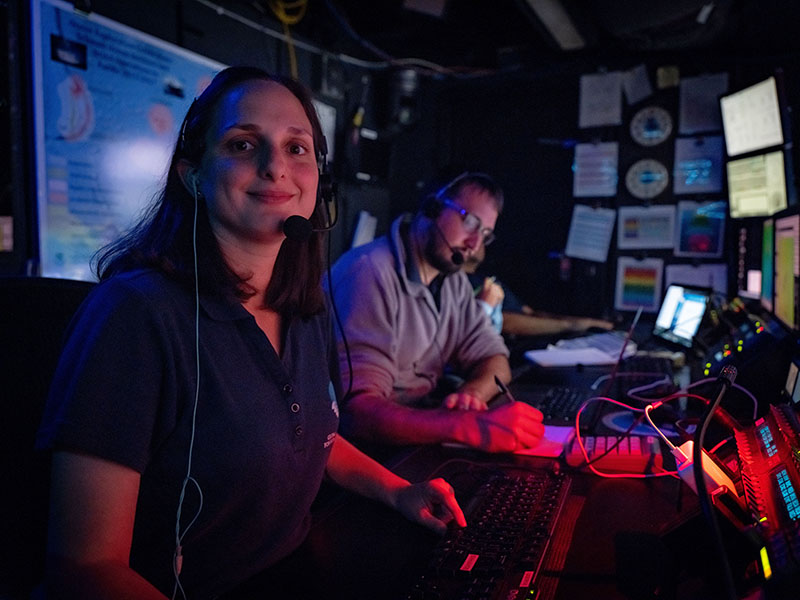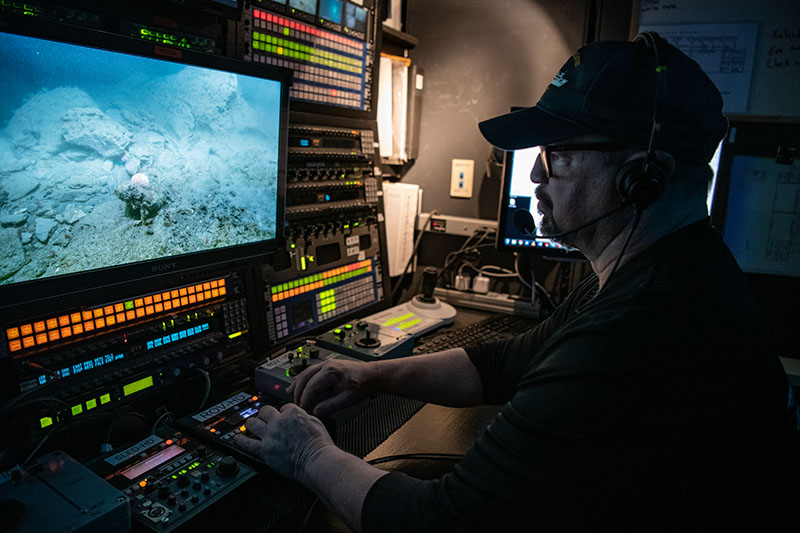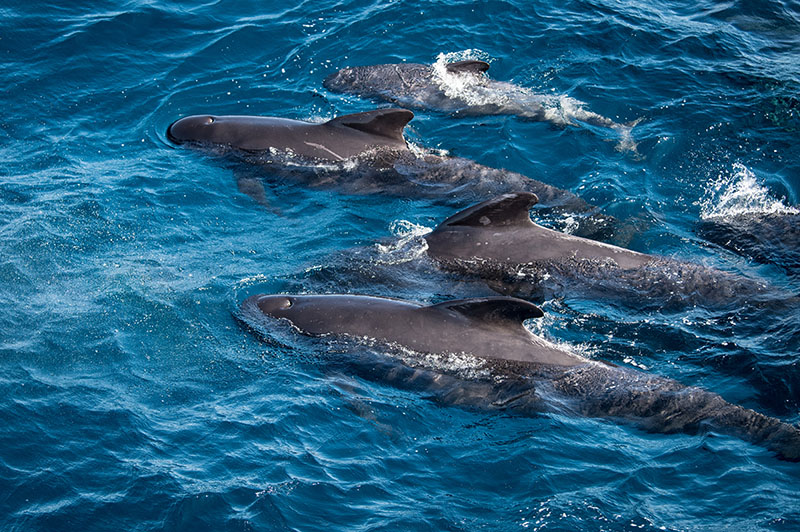Adapted from an essay by Emily Narrow, Global Foundation for Ocean Exploration

Anyone familiar with the ocean exploration missions that take place on board NOAA Ship Okeanos Explorer knows that video content plays a key role in our mission. Our pilots rely on it to safely maneuver our remotely operated vehicles (ROVs), and scientists both onshore and at sea rely on it to take stock of all the species and geologic features that we come across. With video content playing such an important role in our operations, it makes sense to have a dedicated video team.
The video team is made up of two roles: video engineers and video editors. Both roles entail a number of tasks, and sometimes video editors will fill in for the engineers on certain tasks, and vice versa.
One major task that the video engineers are responsible for is shading. Video shading is the task of controlling the ROV cameras to ensure that the image is well lit and in focus. The video shader also has the ability to zoom the cameras in on certain subjects, which is often done when a scientist requests a close up of an organism and can help in species identification. The video shader works in partnership with the ROV pilot, who needs to position the ROV, keep it steady, and control the tilt of the lens in order to allow the video shader to do their work. Good communication between the ROV pilot and the video shader allows the two of them to create a great video image that is both beautiful and useful to the science team.

Another task that the video editors do is clipping. For every dive, the entire dive (often over 8 hours in length) is recorded from start to finish from the main ROV cameras on both Deep Discoverer and Seirios. These recordings are broken up into 5-minute increments in order to facilitate data storage. Whoever is in the clipping chair needs to keep an eye on this process to make sure it functions smoothly, without any interruptions. In addition, we have half a dozen other cameras on the vehicles and on the ship, all providing additional perspectives of our operations, that we can pull footage from (or “clip out”) if the need arises.
The five-minute recordings and the additional “clipped out” video clips are important because the video editors use them to create interesting and compelling highlight videos. For every dive that is conducted on NOAA Ship Okeanos Explorer, one of the video editors will create a daily highlight video. This highlight video will feature the coolest, most unique, or most interesting discovery that was made during the dive. These videos are incredibly fun to make, as it allows the video editors a chance to flex their creative muscles! Furthermore, the video editors use the various video clips from the dives to create longer highlight videos about the expedition as a whole. Both the daily highlight videos and the longer expedition videos can be found on the NOAA Office of Ocean Exploration and Research (OER) website for each expedition, such as Deep Connections 2019. You can also view videos in GFOE’s video gallery and on our YouTube Channel.
Another video team task is to grab still images from the video recordings. For every organism or unique feature that we see on a dive, we take a still image from the video recording. These still images are used in a number of ways: the onboard scientists use the images in their dive summary reports, and will often send copies of the images to scientists all around the world to double-check identifications. These still images are also used for NOAA OER’s outreach efforts.
Lastly, members of the video team will take photographs around the ship to capture glimpses of life on board NOAA Ship Okeanos Explorer. Sometimes something wonderful will happen—like a pod of pilot whales showing up at the bow of the ship! When something eventful like this happens, a member of the video team will grab their camera and rush to capture the action.

When you are on the video team on the Okeanos Explorer there are always lots of tasks that need to be attended to. We work long days, (working twelve hours straight is not unusual), but it is an unbelievably exciting and rewarding job. Every time I meet someone new and they ask me what I do for a living, I get to say that I travel the world’s oceans on board NOAA Ship Okeanos Explorer, making videos about the deep sea. It’s an amazing job, and I feel lucky to be a part of a standout team of ocean explorers.

